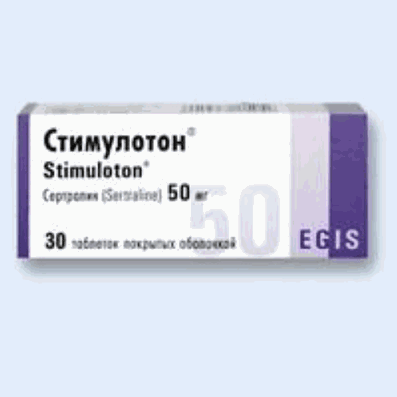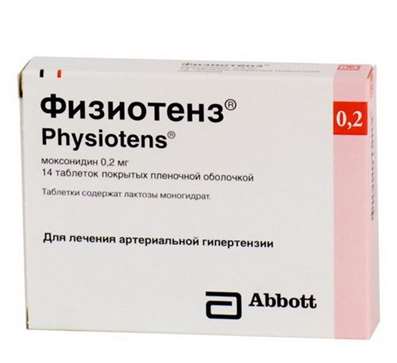Instruction for use: Irbesartan Canon
I want this, give me price
Dosage form: tablets
Active substance: Irbesartanum
ATX
C09CA04 Irbesartan
Pharmacological group
Angiotensin II receptor antagonist [Angiotensin II receptor antagonists (AT1-subtype)]
Composition
Tablets - 1 table.
active substance: Irbesartan 150/300 mg
Auxiliary substances: pregelatinized starch - 51/102 mg; Croscarmellose sodium (impellosis) - 12/24 mg; Lactose monohydrate (sugar milk) - 44/88 mg; Magnesium stearate - 2/4 mg; Povidone K30 - 10/20 mg; Talcum - 3/6 mg; MCC - 28/56 mg
Description of dosage form
Tablets are white or almost white in color, round, biconvex, with a risk.
Allowed a slight marbling.
Pharmachologic effect
Mode of action - antihypertensive.
Pharmacodynamics
Irbesartan is a selective antagonist of angiotensin II receptors (type AT1). It blocks all physiologically significant effects of angiotensin II, mediated by AT1 receptors, regardless of the source or route of synthesis of angiotensin II. Selective antagonism to angiotensin II receptor (AT1) leads to an increase in plasma concentrations of renin and angiotensin II and a decrease in plasma concentrations of aldosterone. Serum potassium concentrations usually do not change significantly when taking irbesartan at recommended doses. Irbesartan does not inhibit ACE (kininase-II), an enzyme involved in the synthesis of angiotensin II and splitting bradykinin to inactive metabolites. For the manifestation of the action of irbesartan, its metabolic activation is not required. Irbesartan reduces blood pressure with a minimal change in heart rate. When taken in doses up to 300 mg once a day, the decrease in blood pressure is dose-dependent, but with a further increase in the dose of irbesartan, the increase in antihypertensive effect is insignificant. The maximum decrease in blood pressure is achieved after 3-6 hours after a single oral intake and is maintained for at least 24 hours. After 24 hours, the blood pressure remains at the level of 60-70% of the maximum decrease in DAD and SAD when taking the recommended doses. After taking 150-300 mg once a day after 24 hours (ie at the end of the inter-dose interval), the blood pressure (SAD / dAD) in the patient's lying or sitting position is reduced by 8-13 / 5-8 mm Hg. Respectively, which is significantly more than with placebo.
Taking the drug at a dose of 150 mg once a day leads to an antihypertensive effect comparable to a two-time intake of the same dose divided into 2 doses. Stable antihypertensive action develops within 1-2 weeks of therapy, and the maximum therapeutic effect is achieved 4-6 weeks after the start of treatment. With withdrawal of the drug, withdrawal syndrome is absent.
The effectiveness of Irbesartan® does not depend on age and gender. Patients of the Negroid race react weakly to monotherapy with Irsar® (as well as all other drugs that affect RAAS).
Irbesartan has virtually no effect on the concentration of uric acid in the blood serum or on the excretion of uric acid by the kidneys.
Pharmacokinetics
After oral administration, irbesartan is well absorbed, its absolute bioavailability is approximately 60-80%. Simultaneous food intake does not significantly affect the bioavailability of irbesartan.
Linkage to blood plasma proteins is approximately 96%. Vd is 53-93 liters.
Irbesartan is metabolized in the liver by oxidation and conjugation with glucuronic acid to form the main metabolite - irbesartan glucuronide (approximately 6%). Oxidation of irbesartan is mainly carried out with the help of cytochrome P450, the participation of the isoenzyme CYP3A4 in the metabolism of irbesartan is insignificant. The pharmacokinetic parameters of irbesartan are linear and proportional in the dose range from 10 to 600 mg; At doses in excess of 600 mg (a dose twice the recommended maximum dose of the drug), the kinetics of irbesartan becomes nonlinear (decrease in absorption).
After oral administration of Tmax in blood plasma - 1,5-2 hours.
The total clearance and renal clearance are 157-176 and 3-3.5 ml / min, respectively. The final T1 / 2 is 11-15 hours. With daily single administration of irbesartan Css in the plasma is achieved after 3 days.
Irbesartan and its metabolites are excreted from the body both with bile (80%) and kidneys (20%), and less than 2% of the dose of irbesartan is excreted by the kidneys unchanged.
Special patient groups
In women (in comparison with men), suffering from hypertension, higher concentrations of irbesartan in the blood plasma were observed. However, there was no difference in T1 / 2 and accumulation of irbesartan. Correction of the dose of the drug in women is not required.
The values of AUC and Cmax of irbesartan in elderly patients (over 65 years) are slightly higher than in patients of young age (18-40 years). The final T1 / 2 in the elderly is not significantly changed. Correction of dose in elderly patients is not required.
Impaired renal function and hemodialysis. The pharmacokinetics of irbesartan do not change significantly. Hemodialysis is ineffective.
Violation of the function of the liver. In patients with cirrhosis of the liver of mild or moderate severity, the pharmacokinetic parameters of irbesartan do not change significantly. Pharmacokinetic studies in patients with severe hepatic insufficiency were not performed.
Indications for Irbesartan Canon
Essential hypertension;
Nephropathy in arterial hypertension and type 2 diabetes mellitus (as part of combined antihypertensive therapy).
Contraindications
Hypersensitivity to irbesartan or any component of the drug;
Deficiency of lactase, lactose intolerance, glucose-galactose malabsorption;
pregnancy;
Lactation period;
Age to 18 years.
With caution: hyponatremia; Diet with restriction of consumption of table salt; Bilateral stenosis of the renal arteries or stenosis of the artery of a single functioning kidney; Decreased BCC (including diarrhea, vomiting); Previous therapy with diuretics; Kidney failure; hemodialysis; Condition after kidney transplantation (lack of clinical experience); Severe hepatic insufficiency (lack of clinical experience); Hyperkalemia; Simultaneous reception with lithium preparations; Stenosis of the aortic and mitral valves; Hypertrophic obstructive cardiomyopathy (GOKMP); Primary hyperaldosteronism; Chronic heart failure (NYHA class III-IV functional class); Ischemic heart disease (CHD) and / or atherosclerotic lesions of cerebral vessels; Patients older than 75 years.
Application of pregnancy and breastfeeding
Like any drug that acts directly on RAAS, Irbesartan® cannot be used in pregnancy.
The use of angiotensin II receptor antagonists is not recommended during the first trimester of pregnancy. The drug is contraindicated in the II-III trimesters of pregnancy, because the use of the drug during this period can cause fetotoxic effects (decreased kidney function, low blood pressure, slowing ossification of the fetal bones) and neonatal toxic effects (kidney failure, arterial hypotension, hyperkalemia). In case of taking the drug in the II-III trimesters of pregnancy, it is necessary to carry out ultrasound of the kidneys and bones of the fetal skull.
The transition to appropriate alternative antihypertensive therapy should be performed before the beginning of pregnancy planning. When pregnancy occurs, irbesartan ® should be discontinued as soon as possible. It is not known whether irbesartan is excreted in breast milk.
If it is necessary to use the drug during lactation, the question of stopping breastfeeding should be resolved.
Side effects
The classification of the incidence of adverse events listed below was determined according to the following (WHO classification): very often> 1/10; Often from> 1/100 to <1/10; Infrequently from> 1/1000 to <1/100; Rarely from> 1/10000 to <1/1000; Very rarely from <1/10000, including individual messages.
Arterial hypertension
From the side of the central nervous system: often - dizziness, fatigue, asthenia.
From the CVS: infrequent - tachycardia; Infrequently, the flow of blood to the skin of the face.
From the respiratory system: infrequently - cough.
From the musculoskeletal system: infrequently - pain in the chest.
From the side of the digestive system: often - nausea and / or vomiting; Infrequently diarrhea, dyspepsia and / or heartburn.
From the side of the reproductive system: infrequently - sexual dysfunction.
Laboratory indicators: often - increased activity of CKK (without clinical manifestations of the musculoskeletal system and absence of hyperkalemia).
Nephropathy in arterial hypertension and type 2 diabetes mellitus
From the side of the central nervous system: often - dizziness when changing body position (transition from lying to standing position).
From the CVS: often - a pronounced decrease in blood pressure, incl. Orthostatic hypotension.
From the musculoskeletal system: often - arthralgia, myalgia.
Laboratory indicators: very often - hyperkalemia, a decrease in hemoglobin (clinically insignificant).
In the post-marketing application of irbesartan, the following adverse events were also noted, the frequency of which cannot be established (according to spontaneous reports)
From the side of the central nervous system: a headache.
Allergic reactions: reactions of hypersensitivity (skin rash, hives, angioedema), leukocytic vasculitis.
From the side of the organ of hearing: noise in the ears.
On the part of the digestive system: dysgeusia, a violation of liver function, hepatitis.
From the musculoskeletal system: arthralgia, myalgia (in some cases associated with increased activity of CK), muscle cramps.
From the side of the urinary system: very rarely - a violation of kidney function (including individual cases of renal failure in patients at risk).
With the development of severe side effects, treatment should be discontinued.
Interaction
Other antihypertensives and diuretics can enhance the antihypertensive effect of irbesartan. Irbesartan can be used in combination with such drugs as beta-blockers, long-acting CCB and thiazide diuretics.
Prior therapy with diuretics in high doses can lead to dehydration and an increased risk of hypotension at the beginning of irbesartan ® therapy.
The simultaneous use of irbesartan with potassium preparations and potassium-sparing diuretics, as well as heparin, can increase the potassium content in the blood serum.
With the simultaneous use of irbesartan with lithium preparations, a potentially reversible increase in lithium serum levels and an increase in its toxicity are potentially possible. Therefore, it is recommended to regularly monitor the concentration of lithium in the blood serum.
When used simultaneously with NSAIDs (including selective inhibitors of COX-2, acetylsalicylic acid (more than 3 g / day) and nonselective NSAIDs), a decrease in the antihypertensive effect is possible. In the case of simultaneous use with NSAIDs, an increased risk of renal dysfunction can occur, including acute renal failure and hyperkalemia (especially in patients with renal impairment). It should be used with caution, this combination, especially in elderly patients. Patients before the start of combination therapy need to restore BCC, as well as monitor kidney function before starting therapy and periodically during the combination therapy.
Hydrochlorothiazide, nifedipine does not affect the pharmacokinetic parameters of irbesartan.
Irbesartan is metabolized predominantly by the isoenzyme CYP2C9 and to a lesser extent by glucuronation. There was no significant pharmacokinetic and pharmacodynamic interaction with warfarin (metabolized with the participation of the isoenzyme CYP2C9). The effects of inducers of the isoenzyme CYP2C9, such as rifampicin, on the pharmacokinetics of irbesartan have not been studied. Irbesartan does not affect the pharmacokinetic parameters of digoxin.
Dosing and Administration
Inside, the tablet is swallowed whole, washed down with water. Take 1 time a day, regardless of food intake.
Usually the recommended initial and maintenance dose is 150 mg once a day.
For patients with reduced BCC (including diarrhea, vomiting), hyponatremia, with diuretic therapy or diets with restriction of intake of sodium chloride or those on hemodialysis, or patients older than 75 years, the recommended initial dose of Irsar® is 75 mg / Day (1/2 tablets of 150 mg). If the therapeutic effect is insufficient, the dose of the drug is increased to 300 mg / day. Further increase in the dose with an interval of 1-2 weeks (more than 300 mg / day) does not lead to an increase in the severity of the antihypertensive effect.
In the absence of effect in monotherapy, a combination with other antihypertensive drugs, for example with low doses of diuretics (hydrochlorothiazide), is possible.
For the treatment of nephropathy in patients with hypertension and type 2 diabetes, the recommended initial dose of Irsar® is 150 mg once a day, if the therapeutic effect is insufficient, the dose may be increased (with an interval of 2 weeks) to 300 mg once a day - Which is the preferred support for the treatment of nephropathy.
Impaired renal function. In patients with impaired renal function, correction of the dosing regimen is not required.
The initial dose of the drug in patients on hemodialysis should be 75 mg / day (1/2 tablets of 150 mg).
Violation of the function of the liver. Patients with impaired liver function of mild to moderate severity do not need to adjust the dose. Clinical experience in patients with severe impairment of liver function is absent.
Patients of advanced age. It is recommended that treatment of patients over the age of 75 begin with a dose of 75 mg (1/2 tablets of 150 mg).
Overdose
Symptoms: marked decrease in blood pressure, tachycardia, rarely - bradycardia.
Treatment: gastric lavage, the appointment of activated charcoal. Conduction of symptomatic and maintenance therapy with constant monitoring of the patient. Hemodialysis is ineffective.
Special instructions
Violation of the water-electrolyte balance. Before using irbesartan ® in patients with reduced BCC (including due to diarrhea or vomiting, intensive therapy with diuretics, diets with restriction of consumption of table salt), it is necessary to restore bcc, eliminate hyponatremia, There is a risk of developing symptomatic arterial hypotension, especially after taking the first dose.
Renovascular hypertension. Potentially increased risk of severe arterial hypotension and renal failure in patients with bilateral stenosis of the renal arteries or stenosis of the artery of a single functioning kidney.
Renal failure and kidney transplantation. It is recommended to monitor the serum potassium and creatinine levels in patients with renal insufficiency. There are no clinical data on the use of irbesartan ® in patients after kidney transplantation.
Patients with arterial hypertension and type 2 diabetes mellitus with impaired renal function. The favorable effect of irbesartan on slowing the progression of renal and cardiovascular disorders has a different degree of severity in different groups of patients: less pronounced in women and patients not belonging to the Europoid race.
Hyperkalemia. It is recommended to monitor the potassium content of patients taking potassium, potassium-sparing diuretics, heparin concurrently with irbesartan ® preparation, especially in the presence of renal failure and / or CVS diseases.
Stenosis of the aortic and mitral valve, GOKMP. As with any vasodilator, irbesartan ® should be used with caution.
Primary hyperaldosteronism. The use of irbesartan ® with primary hyperaldosteronism is inexpedient.
Other. Patients whose vascular tone and renal function are predominantly dependent on RAAS activity (for example, patients with CHF III-IV functional class according to NYHA classification, concomitant kidney disease, including renal artery stenosis), therapy with ACE inhibitors or angiotensin receptor antagonists II is accompanied by the development of arterial hypotension, azotemia, oliguria and, in rare cases, acute renal failure. As with other antihypertensive drugs, a significant reduction in blood pressure in patients with IHD and / or atherosclerotic lesions of the cerebral vessels can lead to the development of myocardial infarction, stroke. In the treatment of these patients should strictly control blood pressure.
Influence on the ability to drive vehicles and perform work that requires a high rate of psychomotor reactions. During the treatment period, care must be taken when driving vehicles and engaging in other potentially hazardous activities that require increased concentration and speed of psychomotor reactions.
Release form
Tablets, 150 mg, 300 mg. By 7, 10, 14 or 15 of the table. In a planar cell box made of PVC film and foil of aluminum printed lacquered. According to 1, 2, 4, 8 contour cell packs of 7 tab. Or 1, 2, 3, 6 contour cell packs of 10 tables, or 1, 2, 4 contour cell packs of 14 tables, or 1, 2, 4 contour cell packs of 15 tables. Put in a pack of cardboard.
Manufacturer
CJSC "Canonfarma Production", Russia
Conditions of supply of pharmacies
On prescription.
Storage conditions of the drug Irbesartan Canon
At a temperature of no higher than 25 ° C, in the original packaging.
Keep out of the reach of children.
The shelf life of the drug Irbesartan Canon
2 years.
Do not use beyond the expiration date printed on the package.

 Cart
Cart





